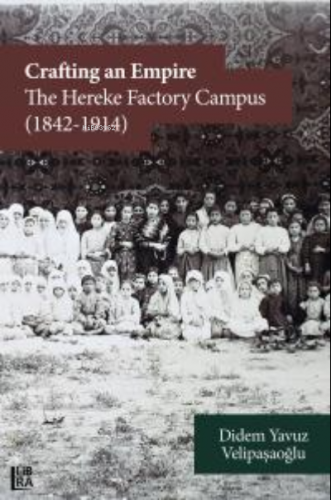9786258472592
593774

https://www.sehadetkitap.com/urun/crafting-an-empire-the-hereke-factory-campus-1842-1914
Crafting an Empire:;The Hereke Factory Campus (1842-1914)
1380.00
One of the starkest examples of the Ottoman Empire's new modernity was the fabrics and carpet model factory founded at Hereke in 1842. This
study focuses on the evolving conditions and social developments that took place over seventy-two years of production at Hereke, and discuss that the
factory represented a microcosm of the Empire's wider industrial labor history. Hereke was used as a lens through which to explore a range of themes that,
taken together, highlight the lifestyles of the early Ottoman workforce and its industrial relations: labor management, industrial action, child labor, class,
gender, housing, education, clothing fashion, the uses of industry, and multiculturalism. Special emphasis is placed on three main aspects of this campus.
First, the issue of housing, as Hereke represents one of the first factory campuses in Europe to adopt a model of providing custom-built housing for its
workers. Second, child labor and education, since the plant not only took in orphans and provided employment to local children and the children of factory
employees, but also included a school with a training and education program. Third, the plant's architectural history, which represents a crucial indicator of
the overall working conditions at the factory and the degree of structural inequality that existed between different plant employees and functionaries.
One of the starkest examples of the Ottoman Empire's new modernity was the fabrics and carpet model factory founded at Hereke in 1842. This
study focuses on the evolving conditions and social developments that took place over seventy-two years of production at Hereke, and discuss that the
factory represented a microcosm of the Empire's wider industrial labor history. Hereke was used as a lens through which to explore a range of themes that,
taken together, highlight the lifestyles of the early Ottoman workforce and its industrial relations: labor management, industrial action, child labor, class,
gender, housing, education, clothing fashion, the uses of industry, and multiculturalism. Special emphasis is placed on three main aspects of this campus.
First, the issue of housing, as Hereke represents one of the first factory campuses in Europe to adopt a model of providing custom-built housing for its
workers. Second, child labor and education, since the plant not only took in orphans and provided employment to local children and the children of factory
employees, but also included a school with a training and education program. Third, the plant's architectural history, which represents a crucial indicator of
the overall working conditions at the factory and the degree of structural inequality that existed between different plant employees and functionaries.
Yorum yaz
Bu kitabı henüz kimse eleştirmemiş.











